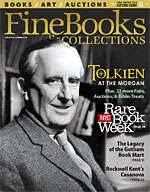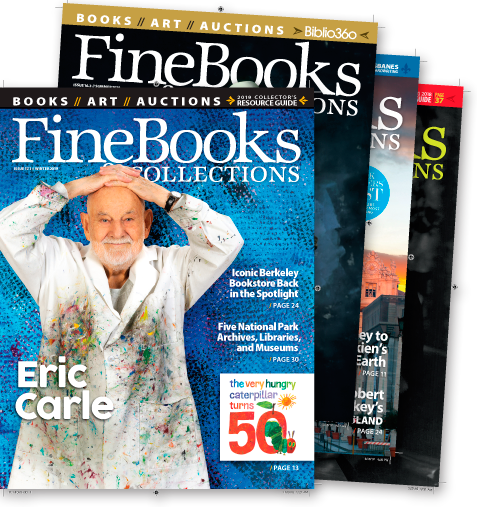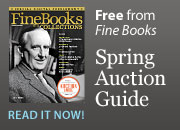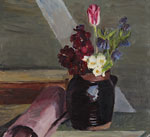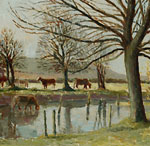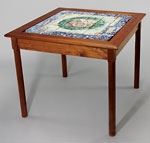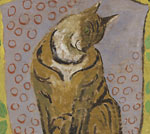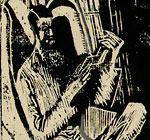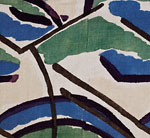The Bloomsbury Aesthetic
Sick of Virginia Woolf? A new exhibit may change your mind.
By Akiko Busch
True, we live in an age of specialization. But why does literacy in one discipline so often accompany utter blinding ignorance in others? A composer I know whose work is generally considered intelligent, thoughtful, and provocative hasn’t set foot in an art gallery in a decade; a film critic with comprehensive knowledge of cinematic history hasn’t a clue who Seamus Heaney is; an artist friend whose canvases are deemed cutting edge in Chelsea thinks nothing of trotting off to see Cats when he and his wife decide to take in some theater. Sensitivity, inquisitiveness, insight, imagination, literacy—call it what you will—in one of the arts often precludes any sense of like engagement in any other.
Why this is so I cannot imagine, but I suspect this condition to be peculiar to the American cultural landscape in the first decade of the new millennium. It’s not this way in Europe, I think, where close national borders, a multiplicity of languages, and the proximity of diverse cultural perspectives all necessitate a broader view that extends to art as well as life. But the fact is I haven’t spent enough time in London or Berlin or Amsterdam in recent years to know whether this is actually true, or just wishful thinking.
Charleston’s residents managed to balance aesthetic expansiveness with social insularity.
What is certain, however, is that a century ago in London this sense of broader exchange between disciplines came with the territory. “A Room of Their Own: The Bloomsbury Artists in American Collections,” an exhibition now making the rounds at several university art galleries, articulates among other things the cross-exchange that accommodated such disparate disciplines as set design, textiles, paintings, literature, and ceramics. As noted by Gretchen Holbrook Gerzina in her catalog essay, “Bloomsbury and Art: An Overview,” African shapes, French light and coloring, Byzantine portraiture, Greek nudes, pointillism, cubism, abstraction, European frescoes, Nijinsky and the Ballets Russes were only a handful of the references those artists and writers routinely looked to.
The irony, of course, is that the group’s domestic arrangements were so excruciatingly inbred. If the Bloomsbury ethos mandated a broad view of the creative process, it was artfully balanced with a narrower approach to familial attachments. As is well known and amply documented elsewhere, incestuous relations and the routine exchange of partners within the circle were both the norm. It’s an intriguing program and one that serves a particular kind of madness: Wander to the outermost limits in artistic inquiry, but stay with the known in emotional and family ties.
And then there’s Charleston, Vanessa Bell’s and Duncan Grant’s country retreat, famous for having nearly every door, wall, piece of furniture, lampshade, bookshelf, and mantle painted, sculpted, and otherwise decorated. Applied arts and fine arts were practiced with few of the customary distinctions. At the same time, however, the farmhouse was a place of social and political detachment, a kind of arts camp that managed to remain remote and disengaged from the social upheaval two world wars fomented elsewhere across the British landscape. As though operating on the premise that the human psyche can only accommodate so much provocation, so much of the unknown, Charleston’s residents surpassed themselves in managing to balance aesthetic expansiveness with social insularity.


